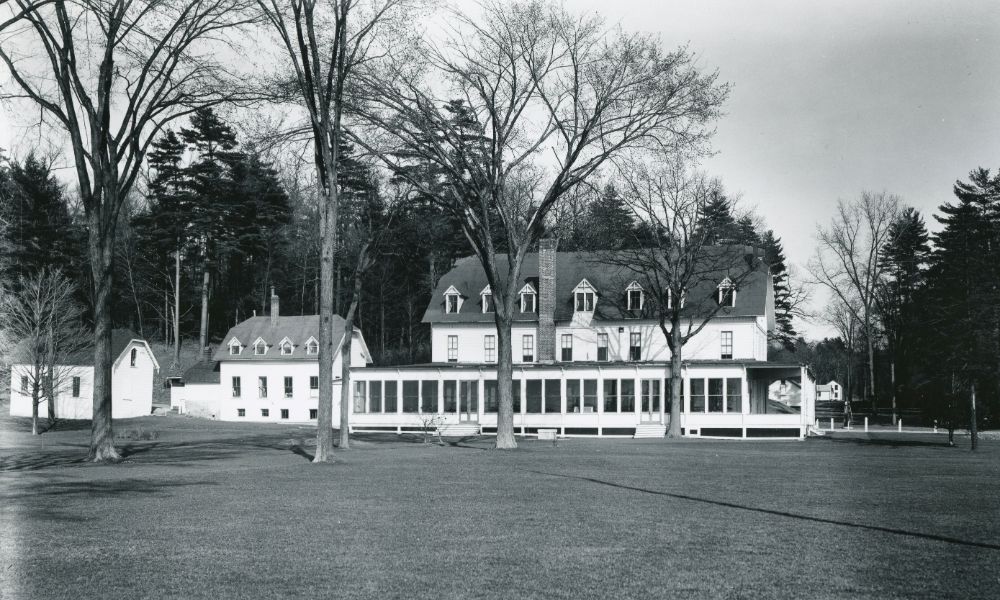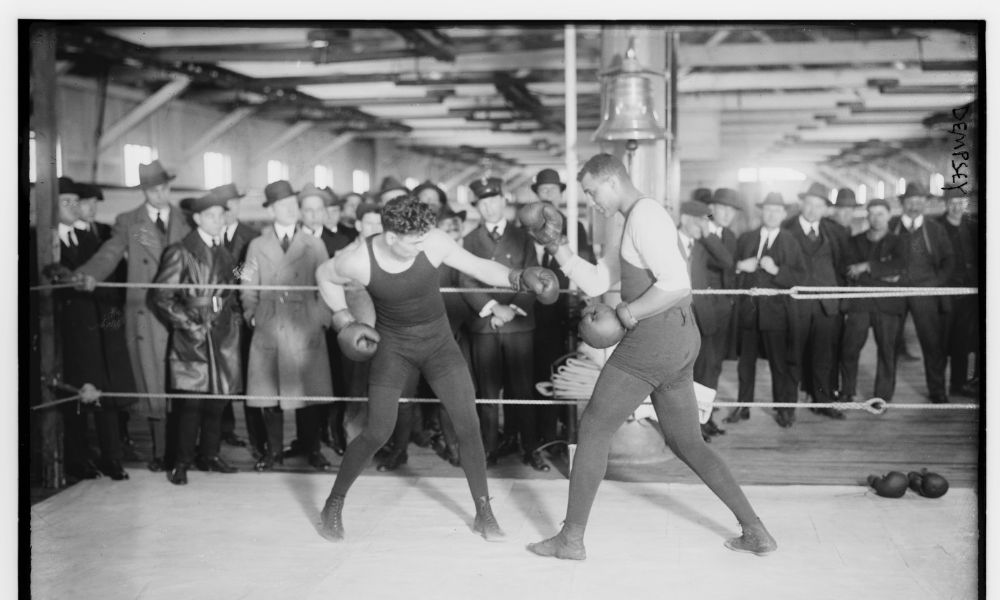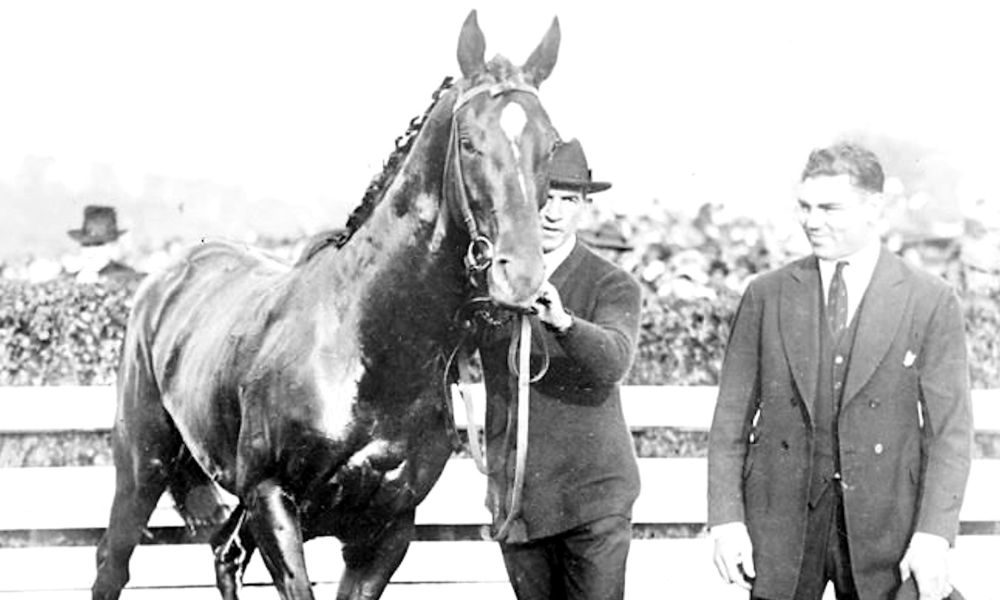One hundred years ago, America’s sports scene was going through something of a golden era. “Roaring” in more ways than one, the ’20s began with the immortalized racehorse Man o’ War winning all 11 of his starts, dizzying turnstiles everywhere he competed. On the diamond, the mighty Babe Ruth clobbered 60 home runs for the New York Yankees in 1927 to lead perhaps the greatest ballclub ever assembled. Football had the renowned Four Horsemen of Notre Dame dominating the collegiate gridiron, while the emerging pro game was being spearheaded by the peerless Red Grange.
And then there was Jack Dempsey, arguably the most revered of all the legendary athletes of his era. Boxing’s world heavyweight champion for more than seven years (July 4, 1919 to Sept. 23, 1926), Dempsey powered the sport of professional pugilism through an unprecedented period of popularity. People from all walks of life were fascinated by Dempsey, especially the newspaper scribes who hung on his every word and documented each unleashing of his prodigious fists.
Like Man o’ War, the wonder horse that wowed fans at Saratoga Race Course in the early ’20s, Dempsey had an affinity for the Spa City. During his time as heavyweight champ, Dempsey trained for some of his most memorable bouts at the White Sulphur Springs Hotel, which stood on the east side of Saratoga Lake. Built in the 1880s and owned by Thomas C. Luther, White Sulphur Springs was a known haven for fighters in training for several years before Dempsey arrived on the scene. When Dempsey came, however, he brought the proverbial circus to town with him.

Some of the country’s top newspapermen—Ring Lardner, Grantland Rice and Damon Runyon, to name a few—were among the thousands who descended upon the Saratoga Lake training camp when Dempsey was in town. There was a somewhat comical incident that highlighted the champ’s first stay at White Sulphur Springs: A Daily News reporter named Paul Gallico reckoned that the only way to accurately document Dempsey’s abilities was to climb in the ring and spar with him. Rice wrote that Gallico would “report his impressions for the paper, provided, of course, his head was still hanging on by a thread. In case he was killed, Mr. Gallico was to write nothing but to communicate if possible through Conan Doyle from the spirit world.”
“What’s the matter, son?” Dempsey asked Gallico. “Don’t your editor like you no more?”
According to author Randy Roberts, the 6-foot-3 Gallico “assumed ‘Pose A’ from the Boxer’s Manual” upon entering the ring. Gallico was reported to have surprisingly landed a few successful light jabs on the champ before it all went horribly wrong for the poor writer’s first-person narrative.
“Just when he was beginning to enjoy the sport, everything went black,” Roberts wrote. “When he opened his eyes, he was sitting on the canvas with his legs collapsed under him…grinning idiotically.”
Despite the abuse he took in the ring at the hands of Dempsey, Gallico wrote in glowing terms of what he experienced at White Sulphur Springs. He described “the grand, exciting, bawdy atmosphere” and sparring partners with “bent noses and twisted ears.” He noticed “doubtful blonds who wandered in and out of the lay-out of wooden hotel and lake-front bungalows, and blonds about whom there was no doubt at all.” There was Dempsey, “slim, dark-haired, still crinkled nose…dressed in trousers and an old gray sweater, playing checkers on the porch of his bungalow with a sparring partner.” Gallico wrote that Luther was “always crying and complaining over the Gargantuan pranks of the sports-writers” at his hotel.

While Dempsey came to Saratoga already a star, the “Manassa Mauler,” as he came to be known, wasn’t an overnight success. He began to box professionally at age 17 with many of his early fights taking place in mining camps at obscure venues such as Pocatello, ID; Ogden, UT; Tonapah, NV.; and Emeryville, CO.
After several years of fighting in the sport’s shadows, Dempsey, at the age of 25, finally received his big break when he fought heavyweight champion Jess Willard on July 4, 1919. The 6-foot-1, 187-pound Dempsey gave the 6-foot-6, 245-pound Willard, known as the “Pottawatamie Giant,” a whipping for the ages. Dempsey floored the champ seven times in the opening round before finishing him off in the third. Willard, so ferocious he had once killed a man in the ring, suffered a broken jaw, broken ribs, several broken teeth, and numerous fractures to his facial bones at the hands of Dempsey. Prior to meeting the up-and-comer, Willard had never been knocked down in his career.
With his raw power and charismatic personality, several of Dempsey’s subsequent title defenses set financial and attendance records. The champ’s training sessions were packed with scribes and fans all eager to get a glimpse of the emerging icon in action. The ones at Saratoga were no exception.
Dempsey’s first training camp at White Sulphur Springs was in 1923. He had already successfully defended the heavyweight title four times when he arrived at Saratoga Lake to prepare for his showdown with Louis Firpo, a fight that became one of the most ballyhooed events in the sport’s annals. Dempsey worked himself into peak condition during his training. He appeared on the cover of Time magazine on Sept. 10, 1923, four days before the bout with Firpo at the Polo Grounds in New York City.
Before a crowd of 85,000, Dempsey sent Firpo to the canvas seven times in the first round. Firpo, however, launched Dempsey through the ropes and onto a reporter’s typewriter in the second with a magnificent left hook. Dempsey somehow gathered himself, beat the count, and made it back into the ring before knocking out the challenger with a vicious stream of heavy shots in the same round.

Following the Firpo fight, Dempsey did not defend his title again for three years. Capitalizing on his enormous popularity, the champion became a product pitchman, appeared in films, traveled the world, and put on boxing exhibitions. He also married the famous actress and singer Estelle Taylor, the first of his four wives.
Upon his return to the ring in September of 1926, Dempsey lost the title to Gene Tunney on points before a Philadelphia crowd of more than 120,000. Explaining the defeat to his wife, Dempsey famously quipped, “Honey, I forgot to duck.”
Dempsey returned to Saratoga Lake in 1927 to train for a July fight against Jack Sharkey. The winner was slated to get a title shot against Tunney later in the year. Dempsey knocked out the future champion Sharkey in the seventh round at Yankee Stadium to set up a rematch with Tunney at Soldier Field in Chicago on September 22. The second fight with Tunney brought in a record $2 million gate. Dempsey appeared to be closing in on taking back the championship when he knocked Tunney down with a left to the jaw in the seventh round. Dempsey, however, ignored a new rule stating that, upon a knockdown, the standing fighter is required to immediately move to a neutral corner. The referee escorted Dempsey to a corner, buying the dazed Tunney several additional seconds to recover before the count began.
Even though the official timekeeper clocked Tunney as being down for 14 seconds, the champ got up at the referee’s count of nine. Dempsey was unable to finish Tunney off and the champion went on to prevail by unanimous decision in what is known as “The Long Count Fight.”
Dempsey retired following his failed attempt to regain the championship. His final career record was 54 wins, 6 losses, and 9 draws. He knocked out 44 of his opponents. In 1950, the Associated Press voted Dempsey the greatest fighter of the past 50 years, and he was inducted into the International Boxing Hall of Fame in 1954. The Manassa Mauler died in 1983 at the age of 87.
And what came of the White Sulphur Springs Hotel? Luther sold the place in the ’40s and it was razed in 1957. Throughout its storied history, the hotel played host to several other notables, including famous financier and gambler “Diamond” Jim Brady, actress Lillian Russell, Saratoga Trunk author Edna Ferber, railroad magnate Jay Gould, and even an Italian prince. None of them, however, garnered the public’s adoration the way Jack Dempsey did. And a century later, we haven’t forgotten those two summers Manassa, Colorado’s greatest spent right here in Saratoga Springs.
